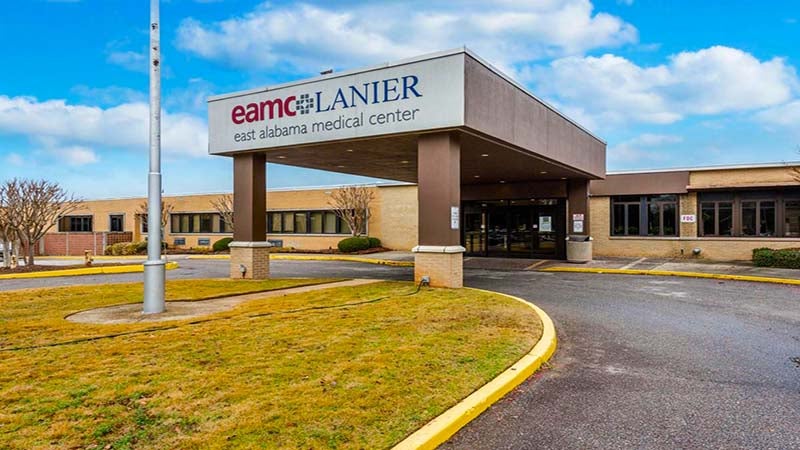A guide to the changes at EAMC-Lanier
Published 8:00 am Wednesday, July 10, 2024
|
Getting your Trinity Audio player ready...
|
With the news that EAMC-Lanier will become a Rural Emergency Hospital, the community is left wondering what the change will mean for them. Greg Nichols, Executive Vice President of EAMC-Lanier, explains the new designation and how it affects Chambers County.
Nichols said the transition will not be a drastic change. While Lanier will retain outpatient and emergency services, the one major difference for patients will be the absence of inpatient services.
What is a Rural Emergency Hospital?
The designation of Rural Emergency Hospital (REH) was created in the 2021 Consolidations Appropriation Act as a new Medicare provider. This was in response to closures and downsizing of rural healthcare services.
An REH designation comes with financial incentives. Reimbursements for the losses of inpatient services are one. Most notably, they also receive a monthly facility payment, which in 2024 is $276,233.58, according to CMS.
“The cost of everything related to healthcare has increased…Reimbursements have not gone up as fast,” Nichols explained. “We’re grateful that the federal government recognized that and saw the number of rural hospitals that were closing across the country that were so important to their communities to provide that urgent care.”
The administrator wanted to make clear that the benefits through Medicare are not to make the hospital a profit but to keep up with the rising costs.
“For some rural hospitals across the state, that financial instability means that they were headed down the road getting close… we’re not in that situation, but we don’t want to wait till we get to that situation,” Nichols said.
What’s Changing?
The most notable change will be the getting rid of inpatient services at Lanier. Upon designation, all inpatient services will be moved to the main EAMC campus in Opelika. However, this does not necessarily mean an immediate transfer down I-85.
“We have an average daily census of around six [inpatient]. Most of those would be transferred to the main campus if they need hospitalization. If they can be put under observation status, which means that we can just observe them, they’re not truly admitted, but they can stay within our emergency department to be observed,” Nichols explained.
The observational status can allow staff at Lanier to monitor the patients who come into the hospital. The average stay at an REH can not exceed 24 hours. That does not mean the hospital will kick you out after a day of observation.
“Our ER now, sees over 15,000, nearly 16,000, patients a year from here in Chambers County. If 90 percent of those are two-hour stays, three-hour stays…We may be able to hold someone in an under-observation status for multiple days,” Nichols said.
“It’s not that anybody walks in has to go to Opelika. That’s not the case at all. We’ll be able to still hold some patients under observation status, but those inpatient admissions would be transferred to the main hospital to be admitted down there,” Nichols said.
In short, the number of patients who are stable enough to remain at Lanier, but critical enough to be admitted, is small.
“To have inpatient beds requires a tremendous amount of overhead and support for just those few inpatients that we have,” Nichols said. “For any rural hospital, any smaller hospital, you really need more patients, and we just don’t have that census here to support everything.”
Emergency and Outpatient are here to stay:
The parts of the hospital that see the most patients, emergency and outpatient clinics will not be changing under the new designation.
“We will still be at our hospital here, we still provide 24/7 emergency department services…We still will provide all of the outpatient services that we currently provide now,” Nichols said.
Those services include emergency care, nursing home services and outpatient services like lab work, radiology, infusion services, physical therapy, cardiac rehab, and procedures at its Ambulatory Surgery Center.
The emergency department will continue to provide critical care to residents. Nichols ensures that those coming in with trauma will be stabilized and transferred to a trauma center when safe, as Lanier has always done.
Nichols said doing away with inpatient will allow them to strengthen and possibly expand the other service lines over time.
“Our emergency department is very busy…We know that our rehab, those are busy, and people enjoy the convenience of getting great care,” Nichols said. “If we see there’s a demand for a service that we don’t offer, we’ll be in a position where we could offer that.”
Moving forward:
The move will not be immediate with such a big transition. Nichol expects the final switch will happen in 5 or 6 months, once all the i’s are dotted.
Conversations about the designation began late in 2023, but it has only been discussions until this year. The hospital recently applied for REH designation to the Center for Medicare and Medicaid as well as notified the staff of the changes to come.
Currently, the inpatient side of the hospital has roughly 80 employees. He ensured the employees would all be able to find equivalent work at Lanier, in the nursing home or other emergency and outpatient services, or at the main campus in Opelika.
“There will not be any layoffs. There’ll be a position within East Alabama Health for any of the employees that are impacted by this,” Nichols said.
The physical hospital will not be changing, unless there is a need for more space for ED services.
Nichols explained that the designation is not binding long-term if inpatient services become necessary in Chambers County.
From the time of REH designation a hospital can convert back to previous status, “no questions asked,” within a year, Nichols said. The beds for inpatient services can be licensed for eight years. In those eight years if the hospital sees an increased need for the beds then they can reapply for inpatient use.
A big question for county residents has been if becoming an REH will affect the 4 mill hospital tax, which was renewed by referendum during the 2022 general election for another ten years.
“We are still a hospital. It is a rural emergency hospital…We’re still a hospital serving our community, and we value greatly the tax money that we get. It helps us with capital purchases and improvements to our facilities, and we’re so thankful and grateful that we get that support, and that would not change,” Nichols said.
Nichols has said in multiple public meetings that the tax has helped keep the hospital afloat during lean years.
“Up until that time [of designation], we will continue doing business as usual, serving our patients through the emergency department, through those outpatient [services] and serving them through the inpatient needs up until we do the conversion,” Nichols said.






